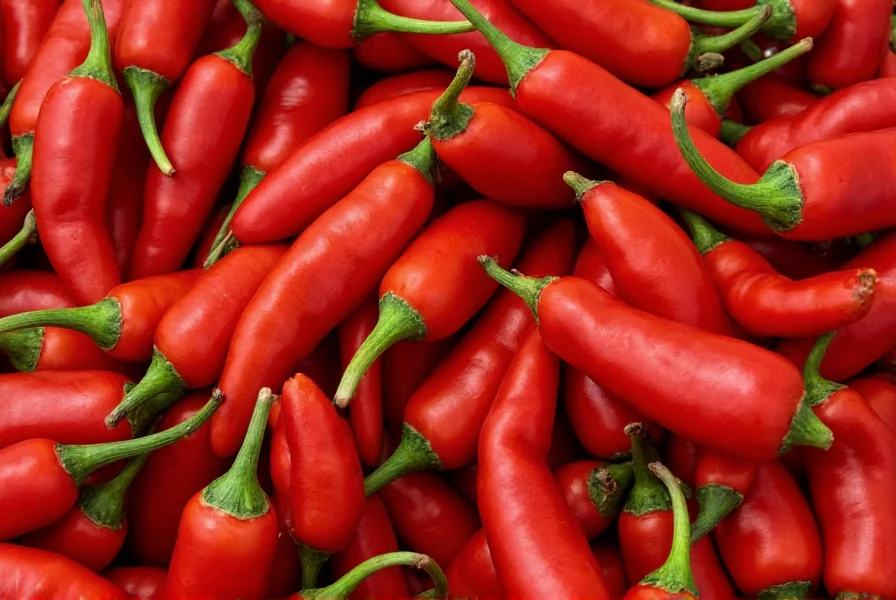For anyone wondering where did chili come from, the answer lies deep in the history of the Americas. Scientific research confirms that chili peppers (genus Capsicum) are native to Mesoamerica, with the earliest archaeological evidence of domestication found in sites across Mexico and Central America dating back to approximately 6000 BCE.
The Ancient Origins of Chili Peppers
Botanical studies reveal that wild chili peppers grew naturally across a broad swath of the Americas, from the southern United States to Peru. However, it was in the region of present-day Mexico where ancient civilizations like the Olmecs, Mayans, and Aztecs first cultivated and selectively bred these plants. Excavations at archaeological sites in Puebla, Mexico have uncovered chili seeds and residue in pottery dating to 4000-3000 BCE, providing concrete evidence of early chili use.
Indigenous peoples incorporated chili peppers into nearly every aspect of their culture. They used them not only as a food source but also for medicinal purposes, religious ceremonies, and even as a form of currency. The Nahuatl word "chilli" (sometimes spelled "chile") entered European languages after Spanish explorers encountered these fiery fruits.
How Chili Peppers Spread Across the Globe
The global journey of chili peppers began with Christopher Columbus's voyages to the Americas in 1492. Though searching for black pepper (Piper nigrum), Columbus encountered chili peppers and brought them back to Europe, mistakenly believing they were related to the Asian spice he sought.
From Europe, Portuguese traders played a crucial role in spreading chili peppers to Africa, India, and Asia during the 16th century. By 1542, Portuguese explorers had introduced chili peppers to Goa, India, where they quickly became integral to local cuisine. Within decades, chili peppers had reached China, Southeast Asia, and Africa, transforming culinary traditions worldwide.
This rapid global adoption represents one of history's most successful plant dispersals. Unlike many crops that required specific growing conditions, chili peppers proved adaptable to diverse climates, allowing them to flourish in regions far from their American origins.
Understanding the Botanical Classification
Modern botany recognizes five domesticated species of chili peppers:
| Species | Common Varieties | Origin Region |
|---|---|---|
| Capsicum annuum | Bell peppers, jalapeños, cayenne | Mexico |
| Capsicum frutescens | Tabasco, malagueta | Central America |
| Capsicum chinense | Habanero, Scotch bonnet | Amazon Basin |
| Capsicum pubescens | Rocoto | Andes Mountains |
| Capsicum baccatum | Aji peppers | Peru/Bolivia |
The most common chili peppers today, including jalapeños and bell peppers, belong to the Capsicum annuum species, which was first domesticated in central-east Mexico. Despite the scientific name chinense suggesting Chinese origins, this species actually originated in the Amazon region of South America.
Chili Peppers vs. Chili Con Carne: Clarifying the Confusion
When exploring where did chili come from, it's important to distinguish between chili peppers and the dish "chili con carne." While chili peppers originated in the Americas thousands of years ago, the meat stew known as chili con carne developed much later, likely in the 19th century among cowboys and settlers in Texas. This culinary evolution represents how indigenous ingredients merged with European cooking traditions.
The Global Impact of Chili Peppers
Today, chili peppers rank among the world's most widely consumed spices. China currently leads global production, followed by Mexico, Turkey, and Indonesia. The integration of chili peppers into regional cuisines has been so complete that many cultures now consider them traditional ingredients, despite their relatively recent introduction.
In Thailand, for example, where chili peppers arrived via Portuguese traders in the 16th century, they became central to Thai cuisine within just a few generations. Similarly, in Hungary, paprika (made from specific chili varieties) became a national symbol despite arriving only in the 16th century.
Measuring the Heat: The Scoville Scale
Developed in 1912 by pharmacist Wilbur Scoville, the Scoville scale measures the pungency (spiciness) of chili peppers. The scale ranges from 0 (bell peppers) to over 2 million Scoville Heat Units (SHU) for the hottest varieties like the Carolina Reaper. This measurement system helps explain why different chili varieties from the same botanical family can produce such dramatically different heat experiences.
Frequently Asked Questions About Chili Origins
Did chili peppers originate in Asia as many people believe?
No, this is a common misconception. Chili peppers originated exclusively in the Americas. Asian cuisines incorporated them only after Portuguese traders introduced them in the 16th century. Before this, Asian cultures used other spices like Sichuan pepper and black pepper for heat.
How did chili peppers get the name 'chili' if they're not from China?
The term 'chili' comes from the Nahuatl (Aztec language) word 'chilli.' Christopher Columbus mistakenly thought he had reached India when he arrived in the Americas, and he called the peppers 'peppers' because they shared pungency with black pepper. The 'China' in Capsicum chinense refers to an early botanical error, not actual Chinese origin.
What's the difference between chili peppers and bell peppers?
Both are varieties of Capsicum annuum. Bell peppers are a mutation that lacks capsaicin, the compound that creates heat in chili peppers. This mutation was selectively bred over time to create the sweet, non-spicy peppers we know today. All bell peppers were originally green, but selective breeding created yellow, orange, and red varieties.
Which country consumes the most chili peppers per capita?
Mexico holds the title for highest per capita consumption of chili peppers, with estimates suggesting the average Mexican consumes approximately 13.5 kg (30 pounds) of chili peppers annually. Chili peppers remain deeply embedded in Mexican culture, cuisine, and even traditional medicine.
How did chili peppers become so integral to Indian cuisine?
Portuguese traders introduced chili peppers to India in the early 16th century, landing first in Goa. Within decades, chili peppers replaced expensive black pepper as the primary source of heat in Indian cooking due to their easier cultivation and more intense flavor. By the 17th century, chili peppers had become essential to regional Indian cuisines from Kashmir to Kerala.











 浙公网安备
33010002000092号
浙公网安备
33010002000092号 浙B2-20120091-4
浙B2-20120091-4